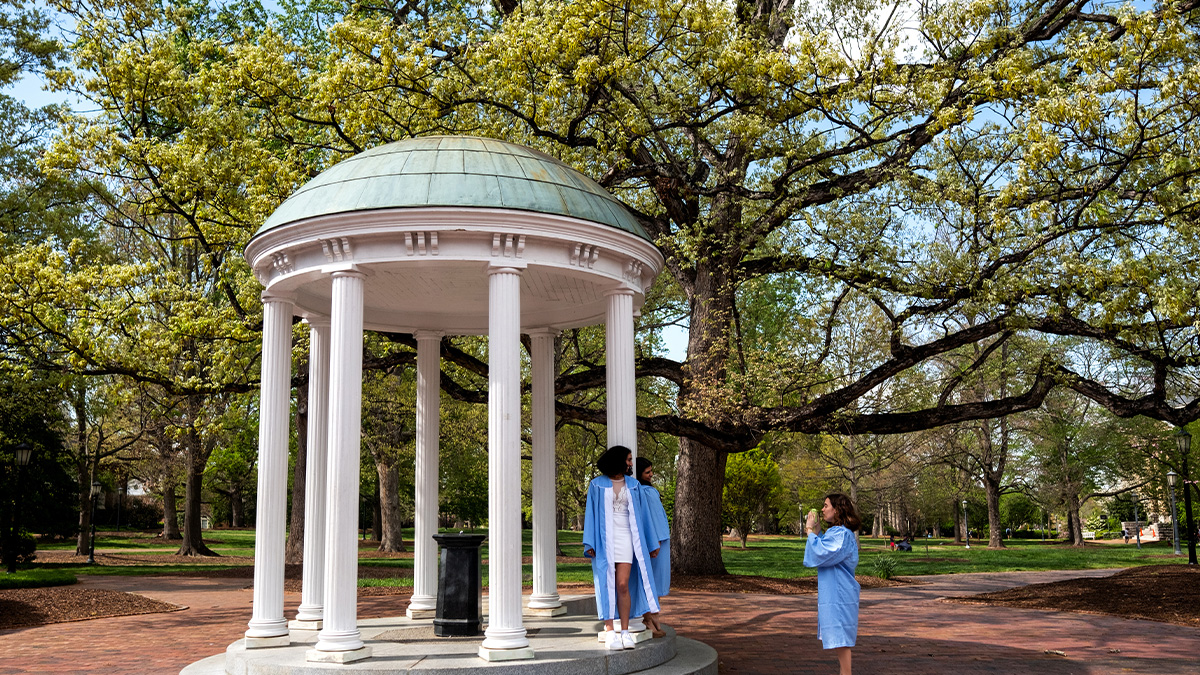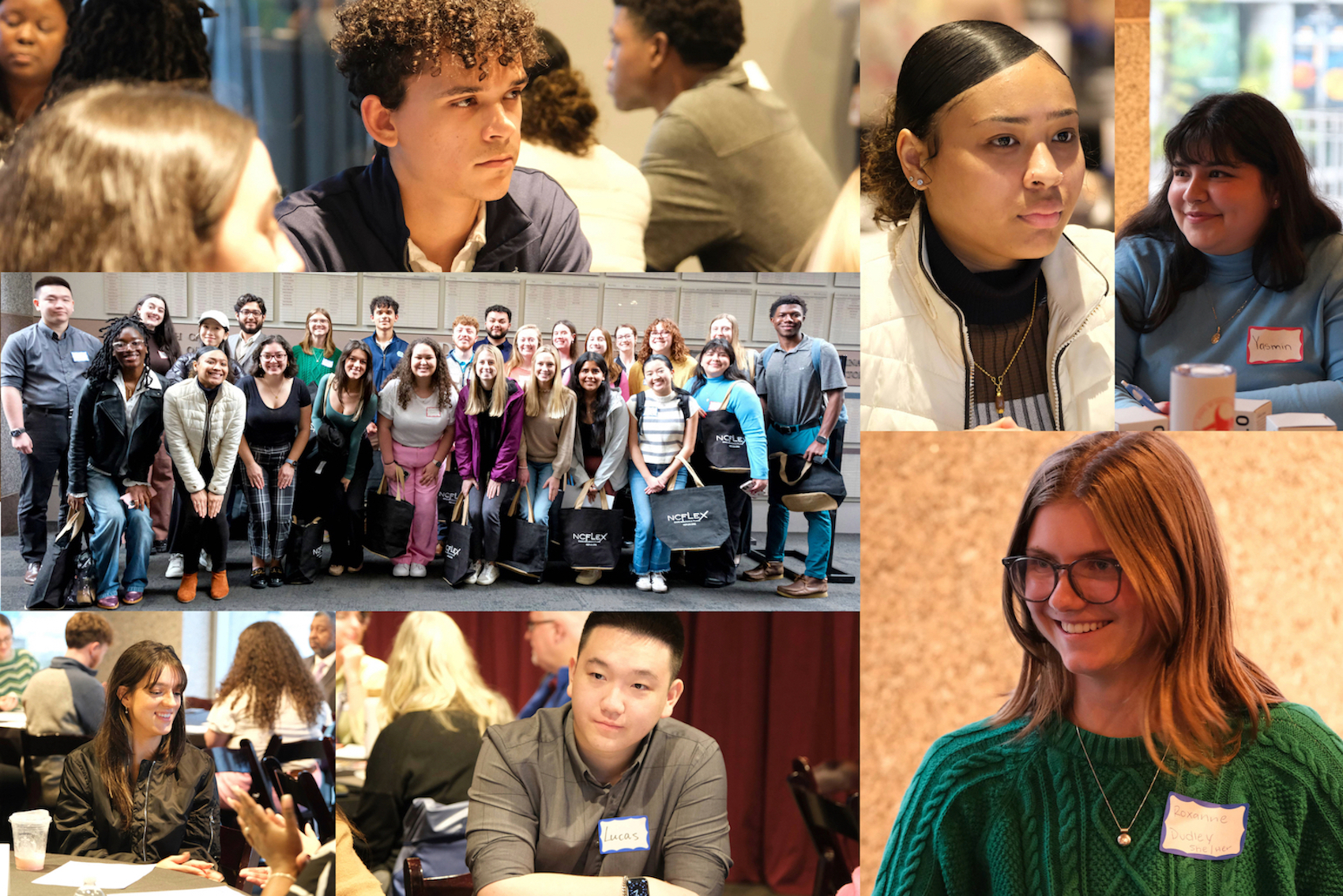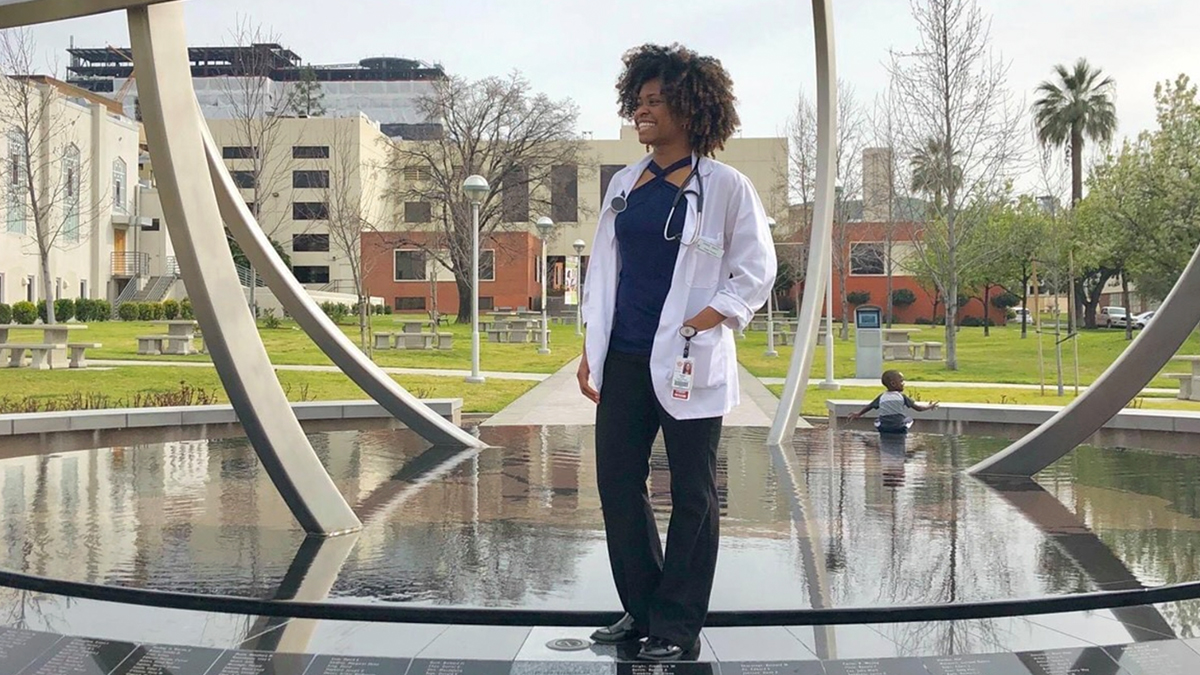Focusing on flexibility
Carolina's Flexible Learning Spaces Initiative will modernize up to 50 classrooms and advance student-focused interaction.

Physics professor Duane Deardorff concedes his new teaching lab in Phillips Hall — filled with round tables, each big enough to seat nine students — looks like the inside of a banquet room. But that’s OK, he quickly adds, because it works.
“The room is set up a little bit like a banquet room where the wait staff has easy access to all the diners at each table, and the diners are sitting in a configuration that facilitates talking to each other in a natural, comfortable setting,” said Deardorff, director of undergraduate laboratories in the physics and astronomy department. “You can lecture in this room, but it is designed to have the focus be on the students and their collaborative work around the tables.”
To encourage this kind of student-focused interaction and to give instructors options for teaching that go beyond presentations in large lecture halls, Executive Vice Chancellor and Provost Robert A. Blouin announced the Flexible Learning Spaces Initiative on Feb. 22. The five-year plan calls for modernizing as many as 50 general purpose classrooms to offer some of the same teaching and learning benefits as the four new “banquet rooms” in Phillips Hall.
Over the past several years, many faculty members have adjusted their teaching to include more interactive learning methods, which research shows improves student engagement and learning outcomes. However, classroom design hasn’t followed suit.
Most of Carolina’s 205 general purpose classrooms were designed for traditional lecture presentations, making it challenging to incorporate active learning techniques such as small group discussions or collaborative problem-solving. In addition, almost a third of classrooms contain furniture that is outdated, in many cases more than 20 years old, and is beginning to fail.
“We have been concerned for many years that existing classrooms set up for presentation inhibit faculty members’ ability to try out new approaches to teaching and learning,” said Vice Provost for Academic Initiatives Carol Tresolini, who chairs the Classroom Policy Steering Committee, which made the recommendations that led to the initiative.
Time for change
The University began experimenting with flexible learning space design in 2010 and has developed nearly 30 flexible classrooms so far, said Bob Henshaw, the ITS liaison to the Center for Faculty Excellence. Using lessons learned from these projects, the University will renovate more than 18,000 square feet of classroom space under the initiative. The initiative will cost nearly $6 million. The Campaign for Carolina is participating in the fundraising efforts for the classroom renovations.
Improvements will include mobile furniture, more whiteboard walls and better acoustics. Some classrooms will also get technology to make collaboration and digital content sharing easier and to provide access for remote learners.
To complement the physical changes, the Center for Faculty Excellence and ITS Classroom Hotline will take the lead in creating professional development opportunities to help faculty leverage the classroom improvements.
“We believe redesigned classrooms will give faculty the flexibility they need to experiment with new approaches to teaching and learning that make it easier for teachers to engage with students and for students to engage with each other,” Tresolini said.
Henshaw, who serves with Tresolini on the steering committee, said the new classrooms will make it easier for students to participate actively in the learning process. But that will not mean the end of lectures.
“When we talk to interested faculty members, we talk to them about how they can complement their lectures by giving students opportunities to be more active participants in the learning process,” Henshaw said. “That is what active learning is about — giving students a chance to think, to talk, to do, as well as to listen.”
Collaborative teaching techniques
Deardorff, for instance, gives his students the chance to think, talk and do by using a teaching method that flips the traditional idea of learning on its head. He starts with a brief lecture, gives the students problems to work on, then spends the remaining class time roaming from table to table, team to team, to answer questions or offer help as needed.
Research shows that, by working together, students improve their understanding of problems and their ability to solve them, Deardorff said. Students’ failure rates drop as well.
Linda Green, a teaching associate professor in the math department, said she scheduled her pre-calculus course at 8 a.m. next semester to improve her chances for getting a large flexible classroom in Greenlaw Hall that uses tablet chairs on casters. The mobility of the furniture makes it easier for her to interact directly with her students and for them to learn from each other.
“It’s more fun to try to think differently from semester to semester, and I feel I can become a more effective teacher and my students will be able to do better if I try different things and keep doing the ones that work,” Green said.
“A lot of the time, if there is no one going around the room helping them, students won’t make effective use of that time,” she added. “They will just sit there and stare at their paper and wait for me to go over the problem rather than try to solve it themselves.”
Political science professor Susan Bickford, who chairs the faculty-led group that will monitor the initiative as it moves forward, said the concept of active learning applies to all academic disciplines, including her own field, political theory.
Bickford likes to get teams of students to read a passage together and then spend time in class thinking about what it means. This approach allows her to walk around the class to review the passage with students, and when needed, push them to think harder and deeper.
It’s more effective — and more enjoyable — to talk with her students rather than at them, she said. What she likes the most about this interaction, she said, is “I really see how the students are thinking.”




